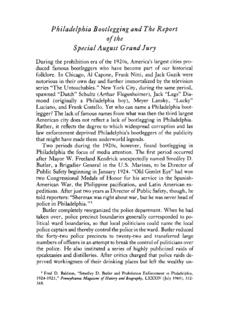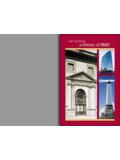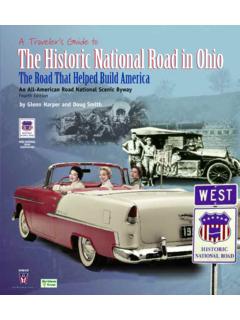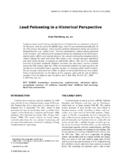Transcription of Urban Conflagrations in the United States by William M ...
1 Urban Conflagrations in the United States by William M. Shields, Introduction From earliest colonial times until the early part of the twentieth century, American cities suffered devastating fires known as Conflagrations . In towns as modest as Bisbee, Arizona, and Plymouth, New Hampshire,1 and as impressive as New York, Boston, Baltimore, Denver, and Chicago,2 Urban Conflagrations destroyed more property over this period than any other natural Moreover, such fires were often not one-time events but occurred repeatedly: Boston was severely damaged by fires in 1653, 1679, 1711, 1760, 1824, 1825, 1835, and 1872. Plymouth, New Hampshire, lost major buildings or groups of buildings in 1862, 1895, 1909, 1910, 1914, 1917, 1930, 1932, and 1948.
2 The mining town of Bisbee burned almost completely in 1885, 1907, and 1908. Five Conflagrations destroyed a major part of a large metropolis: New York in 1835, Chicago in 1871, Boston in 1872, Baltimore in 1904, and San Francisco in 1906. These fires grew in destructive power in parallel with the coming of the Industrial Revolution to the United States in the early 19th century. Cities and towns were no longer collections of merchant buildings and private residences of modest height. Massive factories moved in, and along with them warehouses, multi-story tenements for the mostly-immigrant labor force, and great houses of commerce and Compare: the Boston fire of 1760 destroyed 174.
3 Dwellings and 175 warehouses and shops with losses of about ^100,000; fire in the same city in 1872. 1 For Bisbee, see Bailey, Lynn R., Bisbee. Queen of the Copper Camps, Tucson:Westernlore (1983); for Plymouth, see Speare, Eva, Twenty Decades in Plymouth, New Hampshire, Plymouth: Plymouth Historical Society (1962). 2 For Chicago, see Colbert, Elias and Chamberlin, Everett, Chicago and the Great Conflagration, Cincinnati: Vent. (1871);. Sheahan, James, and Upton, George, The Great Conflagration of Chicago: Its Past, Present, and Future, Chicago: Union (1871);. Goodspeed, Rev. , History of the Great Fires of Chicago and the West, New York: Goodspeed (1871); and Fowler, William , Fighting Fire: the Great Fires of History, Hartford: Dustin, Gilman (1873).
4 For Boston, see Fowler (1873); Conwell, Russell, History of the Great Fire in Boston, Boston: Russell (1873); Sammarco, Anthony Mitchell, The Great Boston Fire of 1872, Dover: Arcadia (1997); and Schorow, Stephanie, Boston on Fire: A History of Fires and Firefighting in Boston, Beverly: Commonwealth Editions (2003). For New York, see Fowler (1873); Corbett, Glenn, and Cannon, Donald, Historic Fires of New York City, Charleston SC: Arcadia (2006). For Denver, see Kreck, Dick, Denver in Flames, Golden: Fulcrum (2000). For Baltimore, see Peterson, Peter B., The Great Baltimore Fire, Baltimore: Maryland Historical Society (2005); Williams, Harold, Baltimore Afire, Baltimore: Schneidereith (1954/1979).
5 3 Conflagrations are the subject of a substantial body of historical and technical literature, beginning with the pre-1900. works cited in Note 2 and leading up to Peter Charles Hoffer's 2006 work Seven Fires: The Urban Infernos that Reshaped America. Perhaps the most comprehensive technical discussion of the subject appeared in a 1949 treatise entitled Fire in Buildings, authored by two prominent British fire safety experts of the time, Eric Bird and Stanley Docking. Chapter XII. of the treatise is entitled Conflagration Hazard, written with the advantage of knowledge gained during World War II. Social impacts of Conflagrations are addressed in Rosen, Christine Meisner, The Limits of Power: Great Fires and the Process of City Growth in America, New York: Cambridge University Press (1986).
6 The aftermath of the Great Chicago Fire is explored in Sawislak, Karen, Smouldering City: Chicagoans and the Great Fire, 1871-1874, Chicago: University of Chicago Press (1994). 4 See Bryan, John, and Picard, Raymond., Managing Fire Services, Washington : International City Management Association (1979), p. 11 ff.; Weaver, John C., and de Lottinville, Peter, The Conflagration and the City: Disaster and Progress in British North America during the Nineteenth Century, Social History XIII. (1980); Frost, and Jones, , The Fire Gap and the Greater Durability of Nineteenth Century Cities, Planning Perspectives 4 (Sept. 1989), p.
7 333-347. 1. destroyed 776 buildings in the heart of the city's commercial sector, with losses of $75 million in 1872 dollars, or $ billion in 2004 By the mid- 1920s , however, these city-consuming fires had abated. While large, multi- building fires continued to cause great damage on occasion6 , the vast infernos leveling hundreds or thousands of structures did not recur. In this article I will identify the technological and social causes of Conflagrations in cities and the technological and social changes which eventually eliminated this once-feared event. The Risk of Uncontrolled Fires Whether or not an Urban fire spreads out of control and envelops large sections of a city is dependent on a number of factors, each of which is changing in time along with changes in the city itself.
8 An early settlement might have been situated close to a source of water, creating generally humid conditions and providing adequate water supply for rudimentary firefighting. Fifty years later, this settlement may have grown outwards miles from its origin, may have been subdivided into multiple political units, and may have changed from a mere trading post to a manufacturing center. During this period, the available combustible loading and the number of ignition sources may have multiplied many times while the fixed supply of water remained barely adequate for drinking and Exacerbating matters, local climatology may have shifted from a damp period to one of drought.
9 On the other hand, these increased hazards may have been opposed by larger and better equipped volunteer fire brigades, improved fire alarms and signals, and greater use of brick, iron and concrete in construction. Comparing the risk of an uncontrolled fire in these two situations is not a simple matter. What we do know, of course, is that as American cities grew from settlement size to metropolis size, the size of the largest fires grew in proportion, leading to Conflagrations of astounding Since it is obvious that such fires were not desirable, they must be regarded as an unintended consequence of technological progress.
10 In this case, however, the unintended consequence was not caused by any particular device or machine, but by a synergism among certain technological conditions created during the growth of American cities. A technological system of great power and complexity was ultimately required to defeat this disastrous unintended consequence. This system, however, was not designed by anyone nor is it actually maintained by anyone. Only the individual elements, both human and artifactual, are produced, owned, and maintained. 5 National Fire Protection Association (NFPA), 25 Largest Fire Losses in History, NFPA website. In this reference the Great Fire of Chicago's 2004 dollar-loss was $168 million.

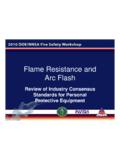
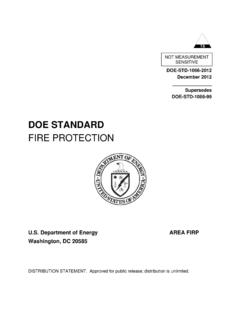


![SFPE Equation Sheet [KL 10-19-2015]](/cache/preview/c/f/3/c/2/1/e/4/thumb-cf3c21e48064d8fdafc6507dedc08886.jpg)
